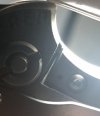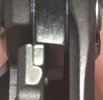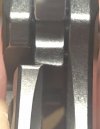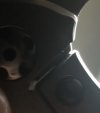luh1202
Gold Member
- Joined
- Jun 25, 2017
- Messages
- 618
Hello guys, had this in mind for couple days now and I just want to share it and listen to what you guys think.
When we looking at a frame lock, I believe most of us looking at how deep it's locking, but IMO, it's not the full picture, I might be totally wrong.
I got two knives here to show. One hinderer xm18 gen6, one zt 0562.
Let's take a look at how "wide" it is locking.
#1 xm18
Only 20% of the width is contacting the blade.
#2 ZT 0562
Only about 40 % of the width is contacting the blade.
So both knives are not locking at their full potential. Every Chirs Reeve and Spyderco frame locks are contacting 100% that gave me "bank vault" locking feedback. If you handled a Sebenza, sage2 or tachno you know what I'm talking about. What do you think?



When we looking at a frame lock, I believe most of us looking at how deep it's locking, but IMO, it's not the full picture, I might be totally wrong.
I got two knives here to show. One hinderer xm18 gen6, one zt 0562.
Let's take a look at how "wide" it is locking.
#1 xm18
Only 20% of the width is contacting the blade.
#2 ZT 0562
Only about 40 % of the width is contacting the blade.
So both knives are not locking at their full potential. Every Chirs Reeve and Spyderco frame locks are contacting 100% that gave me "bank vault" locking feedback. If you handled a Sebenza, sage2 or tachno you know what I'm talking about. What do you think?





